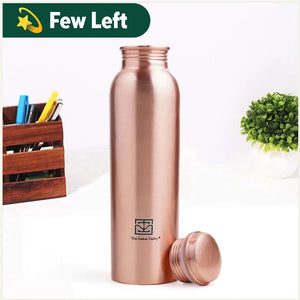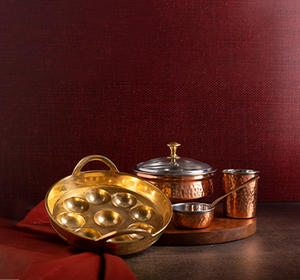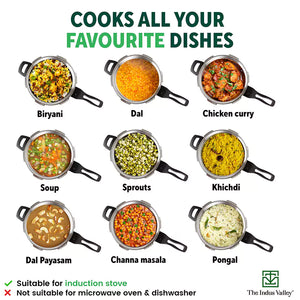Good job that you have decided to switch to healthy cookware! If you have made up your mind to use cast iron cookware then kudos to you!
It is never too late to ditch nonstick cookware and look for better alternatives. For those who are interested to know the basics such as what is cast iron or what is cast iron made of or is cast iron good for health - then you have come to the right page!
So let’s get started….
What is cast iron?
To put it simply; cast iron is a term used to describe a family of metal alloys with iron as the primary alloying element.
While some people believe that cast iron is entirely made of iron, this is simply not the case. In fact, carbon steels contain more iron elements than cast irons.
The metal gets its name from the manufacturing process of cast iron. Iron ore is heated in a furnace until it becomes molten in order to make cast iron.
The molten metal is then cast (poured in the shape of an ingot and allowed to harden). The cast iron ingots are remelted and poured into the final mould.
During the subsequent remelting, the cast iron may be subjected to metallurgical modifications such as the addition of alloying elements or heat-treating processes. 
What is cast iron made of?
Basically, an iron alloy must contain more than 2% carbon in order for the final alloy to be considered as cast iron.
Cast irons also contain traces of other alloys, among which the most common are manganese and silicon. These additional alloying elements are used to further modify the properties of cast iron, resulting in the designation of specific cast iron alloys.
Pig iron, the byproduct of melting iron ore in a blast furnace, is used to make cast iron. Cast iron can be made directly from molten pig iron or by re-melting pig iron that involves large amounts of iron, steel, limestone and carbon (coke), besides other undesirable contaminants.
Phosphorus and sulphur can be burned out of molten iron, but so must carbon, which must be replaced. Carbon and silicon content are adjusted to the desired levels (ranging from 2 to 3.5% and 1 to 33% respectively), depending on the application. Other elements are then added to the melt if required before the final form is cast.
What are the different types of cast iron?
For those who are interested to go further into information, here we have the extras. Actually, there is more than one type of cast iron. In fact, cast iron alloys are classified into four major subtypes and they are:
Besides these, there are some other types of cast iron namely, Mottled Cast Iron, Chilled Cast Iron and Alloy Cast Iron.
Phew, that was quite a load of information on what is cast iron, right?!! Now let’s focus on the cast iron cookware part.
7 Advantages of Cast Iron Cookware
So far you would have understood that cast iron cookware is basically made of natural material. That means it has no chemicals, plastics or any artificial coatings, following which it is actually safe for cooking food and good for our health. Before moving on to the benefits of cast iron cookware, here are some details about cast iron properties.
Considering these features of cast iron material, one can be assured that choosing cast iron cookware will be a wise decision.
Mainly because it is made for heavy-duty cooking and will have a longer shelf life than a normal and toxic nonstick cookware.
Due to its thickness and durability, it can withstand a long duration of cooking and support in even heating and heat retention.
One of the biggest advantages of cast iron cookware is that it will preserve food nutrients and especially, release some amount of iron content in your dishes.
Disadvantages of Cast Iron Cookware
When compared to its benefits, the disadvantages of cast iron cookware are relatively fewer. Read through the downside of cast iron properties given here:
Indeed, cookware made of cast iron is thicker and heavier than iron cookware, stainless steel or nonstick cookware.
It is only because cast iron has a strong, natural-material body that helps in rough usage for lifetime. Also, one has to take extra care in terms of cleaning cookware immediately after use and seasoning it after every wash.
By proper care and maintenance, one can make an effective use of their cast iron cookware. After all; when it comes to health, one cannot compromise on the quality of the cookware they use.
What Is Difference Between Cast Iron and Iron?
|
Cast Iron |
Iron |
|
Cast Iron cookware is made by pouring melted iron into moulds to bring the desired shape. |
Iron cookware is made by pressing iron sheets into desired shapes and sizes. |
|
Cast iron products are thick and heavy compared to normal iron. |
Iron products are light weighted and less durable compared to cast iron |
|
Cast Iron cookware is single piece products without any type of welding, riveting or screws. |
Iron cookware needs handles to be attached separately and can be done using different methods and materials. |
|
Cast Iron products are brittle in nature and make crack or break if mishandled. |
Iron products are not brittle and may hence bend, dent or get deformed if mishandled. |
|
Cast iron cookware takes a longer time to heat up compared to iron. |
Iron cookware heats up quickly and retains heat for a lesser time compared to cast iron. |
|
Cast iron products have much longer life compared to iron. |
Iron products have a short life compared to cast iron. |
What is The Difference Between Cast Iron and Stainless Steel?
The primary distinction between the two elements is that steel is made from iron ore and scrap metals and is referred to as an iron alloy with controlled carbon.
Whereas about 4% of the carbon in iron is cast iron, less than 2% of the carbon in steel is steel.
Cast iron is less expensive than most steels. Furthermore, the melting temperature of cast iron is lower than that of steel, but it has a high compressive strength, hardness, and wear resistance.
As a result, the primary distinction between steel and cast iron is that steel is ductile and malleable, whereas cast iron is hardened and has a high compressive strength.
Another significant distinction between steel and cast iron is that carbon in steel is in the form of iron carbide, whereas carbon in cast iron is in the form of graphite, iron carbide, or both.
Furthermore, because there is no steel in cast iron, it has excellent fluidity.
One main advantage that cast iron cookware has over stainless steel cookware is that the former has the tendency to release iron content in the food while the latter cannot do metal leaching.
However, both cast iron cookware and tri-ply stainless steel cookware of The Indus Valley are good in even heating and preserving food nutrients.
Cast Iron and The Future
Iron has remained an important part of human society since its first use over three thousand years ago.
Since the centuries of working iron by blacksmiths to the invention of cast iron in the industrial age, iron production has come a long way.
Wrought iron has largely fallen out of favour since then, except for decorative purposes.
Cast iron, on the other hand, is still evolving in terms of composition, microstructure, and mechanical properties, and it is making its mark in the modern world.
Coming to the cookware topic… Do visit The Indus Valley and browse through the beautiful, wide range of cast iron cookware.
For sure, your search for the best cast iron cookware in India will end.
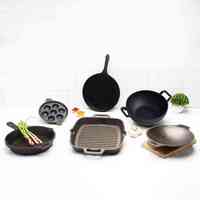
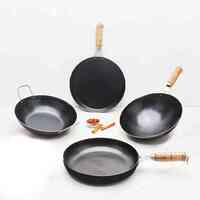
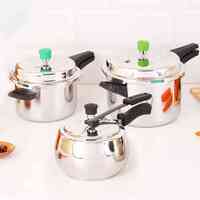
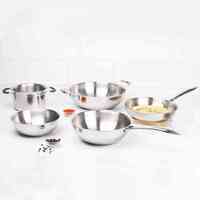
 Easy 7-Day Return
Easy 7-Day Return
 Additional ₹100 Off on Prepaid Orders*
Additional ₹100 Off on Prepaid Orders*




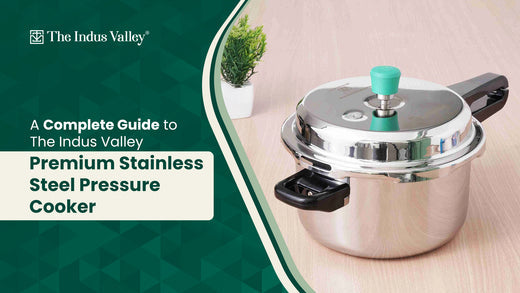
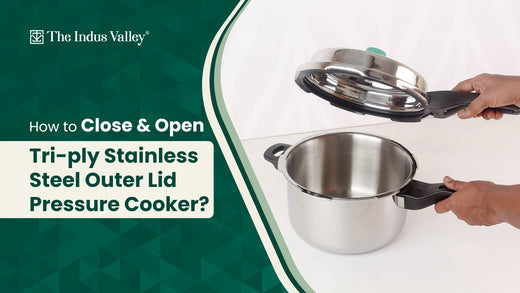
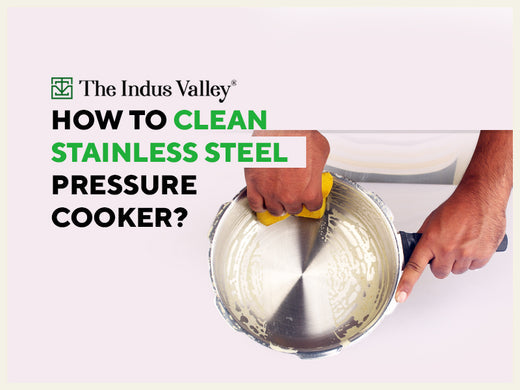
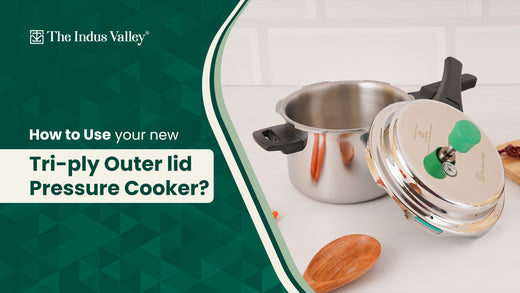
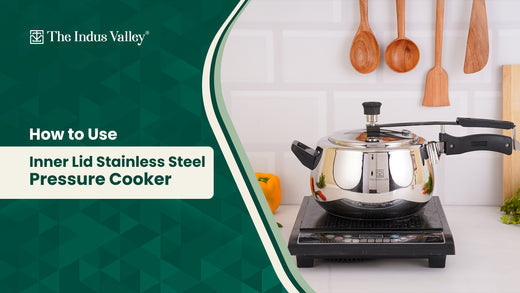
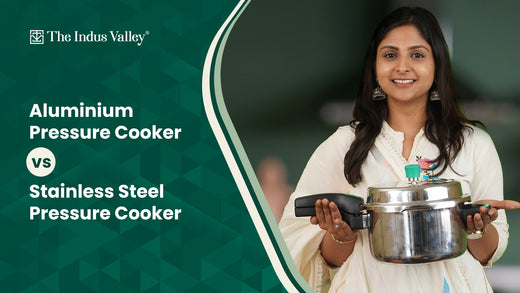
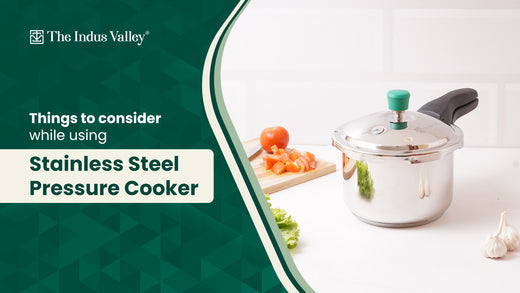
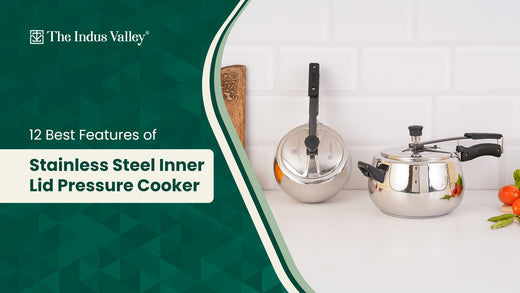


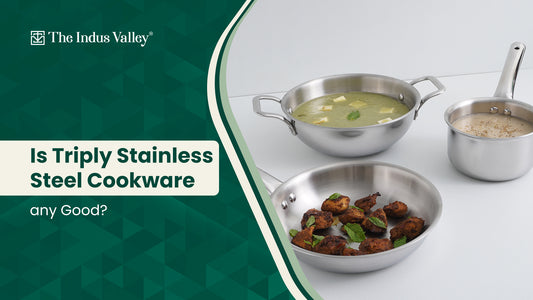
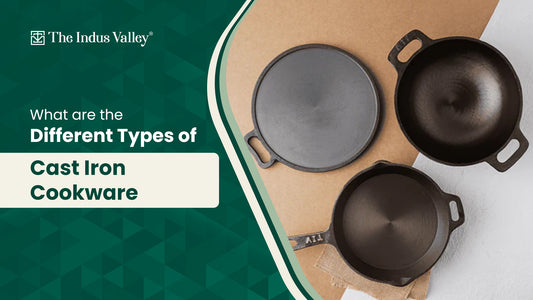
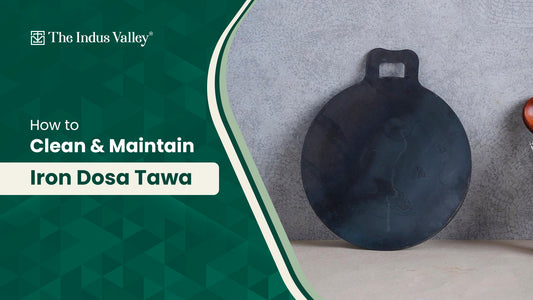
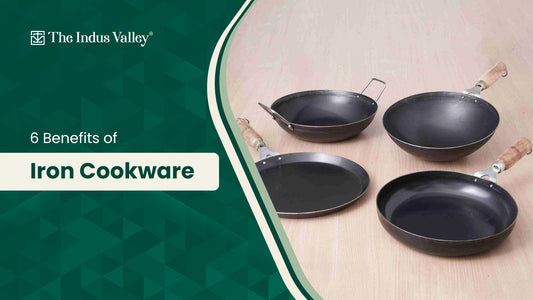
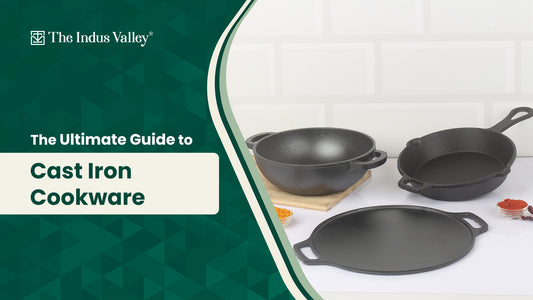
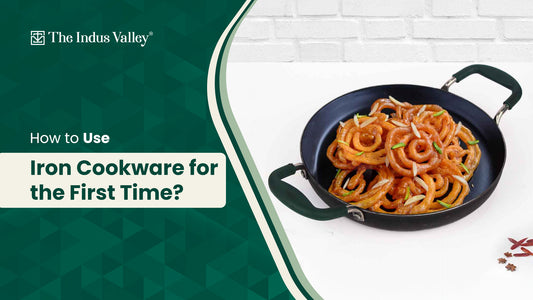
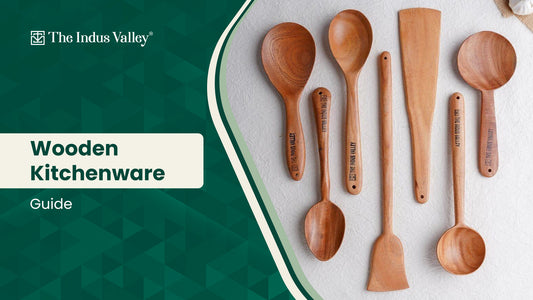
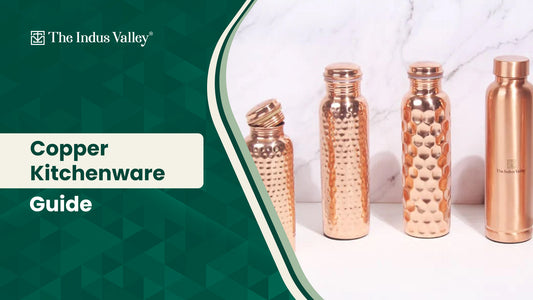
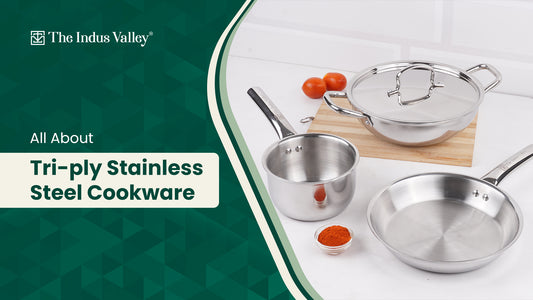
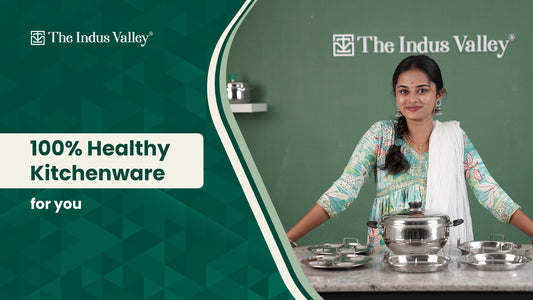
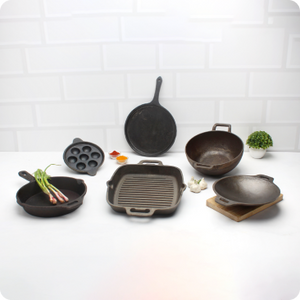
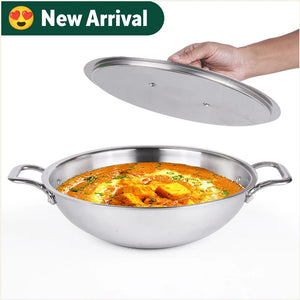
![Neem Wood Spatulas for cooking & Serving – Thick, Long, Sturdy, Large [Set of 6] (Round Serve) - The Indus Valley](http://www.theindusvalley.in/cdn/shop/files/neem-wood-spatulas-for-cooking-and-serving-thick-long-sturdy-large-set-of-6-round-serve-the-indus-valley-1_fcf2cb78-6504-4601-8062-5df2233000c1_300x.jpg?v=1686290651)
